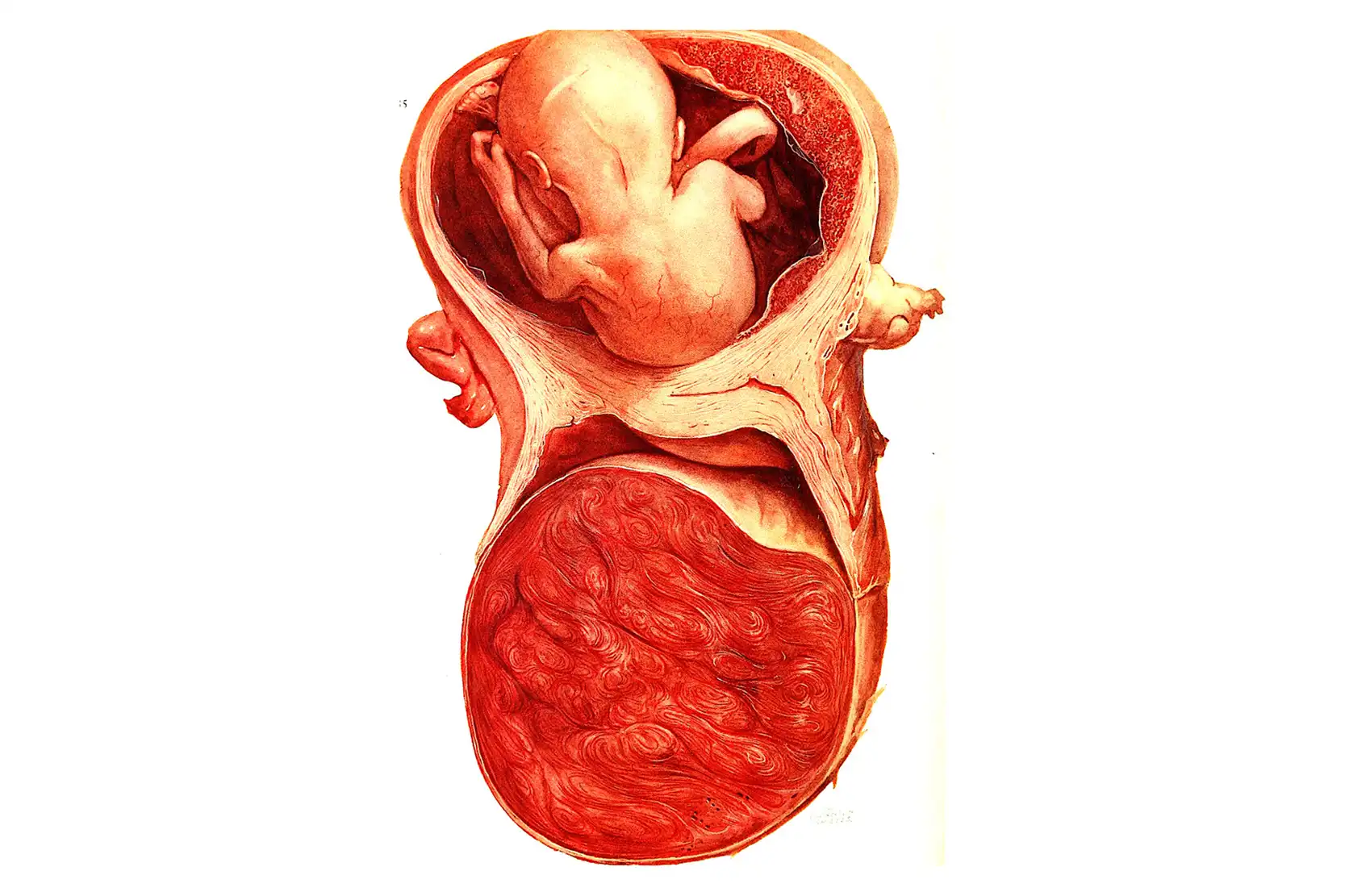
HEALTH BLOG
Homeostasis: A Balancing Act in Living Organisms
-
Rahul Priydarss
Discover the intricate balance of homeostasis in living organisms, from its foundational principles to its critical role in maintaining health and preventing disease. Explore the mechanisms of homeostasis, its impact on different physiological systems, and the causes of imbalance. Gain insights into the importance of homeostasis in both physical and mental well-being, and learn how understanding this fundamental concept can promote optimal health and longevity.
What Is Homeostasis:
Homeostasis stands as the body’s innate drive to achieve and sustain a specific state of balance. Coined by physiologist Walter Cannon in 1926, the concept embodies the body’s vigilant monitoring and regulation of internal conditions, such as temperature and blood sugar levels, to maintain a steady equilibrium.
It serves as the body’s mechanism to uphold stability amid external fluctuations, ensuring optimal functioning and survival. Vital bodily processes including temperature regulation, blood pressure control, pH balance, and glucose management are orchestrated by Homeostasis, guaranteeing cellular function within a precise range of conditions.

Table of Contents
Concept of Homeostasis:
Homeostasis represents a foundational principle in physiology, embodying the body’s innate drive to maintain internal stability amidst external changes. This concept, introduced by physiologist Walter Cannon in 1926, underscores the intricate mechanisms through which the body orchestrates a delicate balance of its internal environment.
At its essence, homeostasis involves a dynamic interplay of physiological processes aimed at regulating various internal parameters to uphold optimal conditions for cellular function. Through vigilant monitoring and feedback mechanisms, the body adjusts factors such as temperature, blood pressure, pH levels, and nutrient concentrations within narrow ranges.
Definition of Homeostasis:
Homeostasis refers to the biological process through which living organisms maintain stable internal conditions despite external changes. This dynamic equilibrium involves the regulation of various physiological parameters such as temperature, pH levels, blood pressure, and nutrient concentrations within narrow ranges to support optimal cellular function.
Importance of Homeostasis in Living Organisms:
Homeostasis is essential for the survival and well-being of living organisms. By maintaining internal stability, homeostasis ensures that cellular processes can function optimally, enabling organisms to adapt to environmental fluctuations and challenges. Without homeostasis, the body’s internal environment would become unstable, leading to disruptions in essential functions and potentially compromising health and survival. Thus, homeostasis serves as a cornerstone of biological regulation, allowing living organisms to thrive in diverse and changing environments.
How Is Homeostasis Maintained:
Homeostasis is maintained through a complex interplay of physiological processes that continuously monitor, regulate, and adjust internal conditions to keep them within a narrow range. Similarly, when something in your body is not in balance, a natural reaction occurs until the balance is restored. Here’s how the main parts of homeostasis function.
Stimulus: Something in the environment changes, throwing the body out of balance.
Receptor: Specialized receptors detect this change and send a signal to the control center.
Control Center: The control center processes the signal and decides what action is needed to restore balance.
Effector: The effector receives instructions from the control center and carries out the necessary actions to bring the body back to its balanced state.
Feedback Mechanisms: Negative feedback loops are central to homeostasis. These loops involve sensors that detect changes in internal conditions, such as temperature, pH, or hormone levels. When deviations from the set point are detected, corrective responses are initiated to counteract the changes and restore equilibrium. For example, if blood glucose levels rise after a meal, insulin is released to facilitate glucose uptake by cells, bringing blood glucose levels back to normal.
Hormonal Regulation: Hormones serve as chemical messengers that help regulate various physiological processes involved in homeostasis. Hormones are produced by endocrine glands and act on target organs or tissues to elicit specific responses. For instance, the release of parathyroid hormone helps regulate calcium levels in the blood by stimulating the release of calcium from bone and enhancing its absorption in the intestines.
Nervous System Control: The nervous system plays a critical role in maintaining homeostasis through rapid responses to changes in internal and external environments. The autonomic nervous system, which consists of the sympathetic and parasympathetic branches, regulates involuntary functions such as heart rate, blood pressure, and digestion. For example, during a stressful situation, the sympathetic nervous system triggers the “fight or flight” response, increasing heart rate and blood pressure to prepare the body for action.
Renal Regulation: The kidneys are vital for maintaining homeostasis by regulating fluid balance, electrolyte levels, and pH. Through processes such as filtration, reabsorption, and secretion, the kidneys help remove waste products and excess substances from the body while retaining essential nutrients and ions. For example, the kidneys adjust urine production and composition in response to changes in hydration status and electrolyte levels to maintain internal balance.
Temperature Regulation: Thermoregulation is essential for maintaining homeostasis by keeping the body’s internal temperature within a narrow range. Mechanisms such as sweating, vasodilation, and shivering help dissipate or conserve heat as needed to prevent overheating or hypothermia.
Types of Homeostasis:
Homeostasis manifests in various forms to regulate different physiological processes and maintain stability within the body. Some key types of homeostasis include.
Thermoregulation: Thermoregulatory homeostasis regulates body temperature within a narrow range to ensure optimal cellular function. Mechanisms such as sweating, shivering, and vasodilation help dissipate or conserve heat as needed to maintain internal temperature stability.
Osmoregulation: Osmoregulatory homeostasis regulates the balance of water and solutes within the body to maintain proper hydration and electrolyte levels. The kidneys play a crucial role in osmoregulation by adjusting urine production and composition to excrete excess water and ions while retaining essential nutrients.
Blood sugar regulation: The body carefully regulates blood sugar levels (glucose) to ensure that cells have enough energy to function properly. The pancreas releases hormones such as insulin and glucagon to keep blood sugar levels within a normal range.
pH Regulation: pH homeostasis maintains the body’s internal pH balance to support proper cellular function and enzyme activity. Buffers in bodily fluids help resist changes in pH, while the kidneys and lungs work together to eliminate excess acids or bases to maintain pH equilibrium.
Blood Pressure Regulation: Blood pressure homeostasis regulates the force exerted by circulating blood against the walls of blood vessels. Mechanisms such as vasodilation, vasoconstriction, and the renin-angiotensin-aldosterone system help adjust blood vessel diameter and fluid volume to maintain optimal blood pressure levels.
Oxygen homeostasis: The body regulates the amount of oxygen in the blood to ensure that cells have enough oxygen to function properly. The respiratory system and circulatory system work together to maintain oxygen homeostasis.
Homeostasis in Different Systems:
Homeostasis operates across various physiological systems within the body to maintain stability and support optimal function. Here’s how homeostasis functions in some key systems.
Homeostasis in the Nervous System: In the nervous system, homeostasis involves regulating various physiological functions to maintain stability and support optimal function. This includes controlling heart rate, breathing, body temperature, and other vital processes. The autonomic nervous system plays a key role in maintaining balance by adjusting these functions in response to internal and external stimuli. For example, when the body temperature rises, the nervous system triggers mechanisms such as sweating and vasodilation to dissipate heat and restore normal temperature levels.
Homeostasis in the Respiratory System: In the respiratory system, homeostasis ensures the maintenance of appropriate levels of oxygen and carbon dioxide in the blood. Through processes like breathing rate and depth adjustments, the respiratory system ensures adequate gas exchange to support cellular function. When oxygen levels decrease or carbon dioxide levels increase, sensors in the body signal the respiratory center in the brain to adjust breathing accordingly. This helps restore the balance of gases in the blood and maintain homeostasis.
Homeostasis in the Cardiovascular System: In the cardiovascular system, homeostasis involves regulating blood pressure and fluid balance to ensure proper circulation throughout the body. Mechanisms such as vasoconstriction, vasodilation, and fluid retention help control blood pressure and maintain adequate blood flow to tissues and organs. For example, when blood pressure drops, the body may increase heart rate and constrict blood vessels to raise blood pressure and maintain homeostasis. Similarly, when blood volume decreases, mechanisms are activated to retain fluid and restore balance within the cardiovascular system.

Impact of Homeostasis:
The impact of homeostasis is fundamental to the very existence of living things. It allows organisms to thrive in a constantly changing environment by keeping critical internal conditions stable. Here’s a breakdown of its vital role.
Survival and Health:
Maintains Optimal Functioning: By keeping internal conditions like temperature, blood sugar, and pH within a narrow range, homeostasis ensures cells, tissues, and organs function properly. This allows the organism to carry out essential life processes like digestion, respiration, and reproduction.
Adapting to Change: Homeostasis isn’t about a perfectly static state. It’s a dynamic equilibrium, adjusting internal conditions in response to external shifts. For instance, sweating during exercise cools the body, or shivering in cold weather generates heat, maintaining a stable core temperature despite environmental variations.
Wound Healing: Homeostasis plays a crucial role in wound healing. When the skin is broken, the body triggers a cascade of responses to stop bleeding, fight infection, and rebuild tissue. This ensures the wound closes and internal fluids remain balanced.
Fighting Disease: A functional immune system relies on homeostasis. When pathogens enter the body, the immune system activates, but a well-balanced internal environment ensures this response doesn’t damage healthy tissues.
Diseases: When homeostasis is disrupted, it can lead to various diseases. For example, uncontrolled blood sugar levels can cause diabetes, and imbalances in blood pH can lead to acidosis or alkalosis, both of which can be life-threatening.
Reduced Fitness: If the body struggles to maintain homeostasis due to illness or external factors, it can’t focus energy on other activities. This can lead to fatigue, decreased physical performance, and a weakened immune system.
Longevity: Maintenance of homeostasis is associated with longevity and overall lifespan. Organisms that can effectively regulate internal conditions and adapt to environmental changes are better equipped to withstand stressors and maintain health over time. Conversely, dysregulation of homeostasis can contribute to accelerated aging and increased susceptibility to age-related diseases.
Homeostasis and Mental Health:
There’s a fascinating connection between homeostasis and mental health. While homeostasis traditionally refers to physical processes, the concept can be applied to mental well-being as well. Here’s how.
The Role of Neurotransmitters: Our brains rely on neurotransmitters like serotonin, dopamine, and norepinephrine for balanced mood regulation, sleep, and stress response. These chemicals act like a homeostatic system, keeping emotional states within a healthy range.
Disruptions and Mental Health Conditions: When the delicate balance of these neurotransmitters is disrupted, it can lead to mental health conditions like depression, anxiety, and bipolar disorder. For instance, low serotonin levels are associated with depression and anxiety, while imbalances in dopamine can contribute to bipolar disorder.
Mood Homeostasis: Research suggests that people with mental health conditions, particularly depression, might struggle with impaired mood homeostasis. This means they might have difficulty engaging in activities that lift their mood when feeling low or struggle to avoid activities that worsen their mood.
Impact of Stress Chronic stress disrupts the body’s hormonal balance, leading to elevated cortisol levels. This can disrupt sleep patterns, weaken the immune system, and contribute to anxiety and depression.
Healthy Habits: Practices like regular exercise, balanced diet, and enough sleep can support neurotransmitter production and improve stress management.
Therapy: Cognitive-behavioral therapy (CBT) can help individuals identify and change negative thought patterns that contribute to emotional imbalances.
Mindfulness: Techniques like meditation and mindfulness can enhance self-awareness and emotional regulation, promoting mental well-being.
Causes of Homeostatic Imbalance:
Homeostatic imbalance occurs when the body’s regulatory mechanisms fail to maintain internal stability, leading to disruptions in physiological processes. Several factors can contribute to homeostatic imbalance.
Ageing: As we age, the body’s ability to regulate internal processes declines. This can lead to imbalances in things like blood sugar control, body temperature regulation, and fluid balance.
Genetics: Certain genetic predispositions can make individuals more susceptible to homeostatic imbalances. For example, a family history of diabetes increases the risk of developing the condition due to impaired blood sugar regulation.
Cellular Malfunctioning: When cells malfunction or die due to reasons like genetic mutations or diseases, it can disrupt the normal physiological processes necessary for homeostasis.
Diet and Nutrition: Poor diet choices, such as excessive intake of processed foods, sugar, or unhealthy fats, can contribute to imbalances in blood sugar levels, cholesterol levels, and electrolyte balance. Deficiencies in essential vitamins and minerals can also disrupt homeostasis.
Substance Abuse: Drugs and alcohol can have a detrimental impact on various organ systems, hindering their ability to maintain homeostasis. For instance, excessive alcohol consumption can disrupt blood sugar regulation and liver function.
Environmental Toxins: Exposure to environmental toxins like pollutants, heavy metals, or radiation can damage cells and organs, leading to homeostatic imbalances.
Stress: Chronic stress triggers the release of stress hormones like cortisol, which can disrupt sleep patterns, blood sugar regulation, and immune function.
Injury and Illness: Injuries and illnesses can disrupt homeostasis by causing inflammation, blood loss, or impairing the function of organs and systems.
Pathogens: Bacteria, viruses, and parasites can invade the body and disrupt homeostasis by damaging tissues, triggering inflammatory responses, and interfering with normal physiological processes.
FAQs about Homeostasis:
A1: Homeostasis is primarily regulated through feedback loops involving sensory receptors, control centers, and effector organs. These mechanisms ensure that internal conditions remain within optimal ranges despite external fluctuations.
A2: Temperature regulation is primarily controlled by the hypothalamus in response to input from thermoreceptors located throughout the body. Mechanisms such as sweating, vasodilation, and shivering help regulate heat loss or retention, maintaining core temperature stability.
A3: Examples of homeostatic imbalance include conditions such as diabetes mellitus, hyperthermia, electrolyte imbalances, and hormonal disorders. These conditions disrupt the body’s ability to maintain internal equilibrium, leading to physiological dysfunction.
A4: Homeostasis is essential for health because it ensures the optimal functioning of cells, tissues, and organ systems. By maintaining internal equilibrium, homeostasis supports vital physiological processes such as metabolism, immune function, and tissue repair.
A5: Homeostatic imbalance can predispose individuals to various diseases by compromising their ability to adapt to environmental changes and physiological stressors. Dysregulation of homeostatic mechanisms is implicated in conditions ranging from metabolic disorders to autoimmune diseases and cardiovascular ailments.

-Please remember, to always consult with healthcare professionals or Doctors for personalised advice related to medical conditions.
Conclusion:
In health, homeostasis is indispensable, enabling cells, tissues, and organs to perform their vital functions seamlessly. It promotes adaptation to environmental changes, facilitates wound healing, and supports immune defense mechanisms. Conversely, disruptions in homeostasis pave the way for disease, from metabolic disorders to mental health conditions, underscoring its critical role in maintaining well-being.




